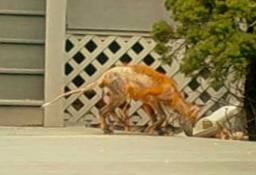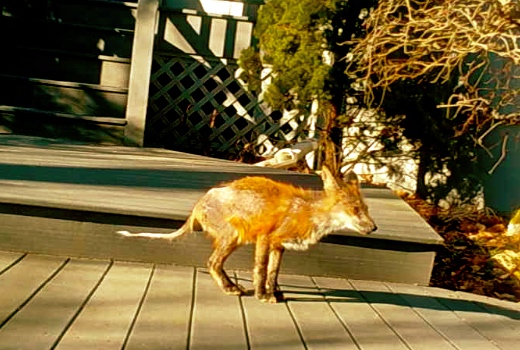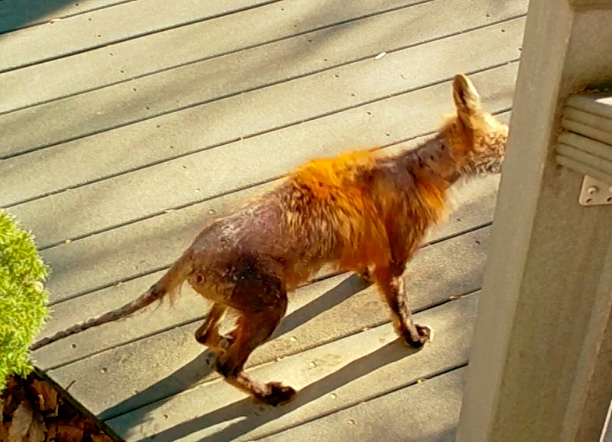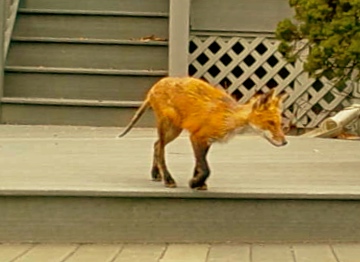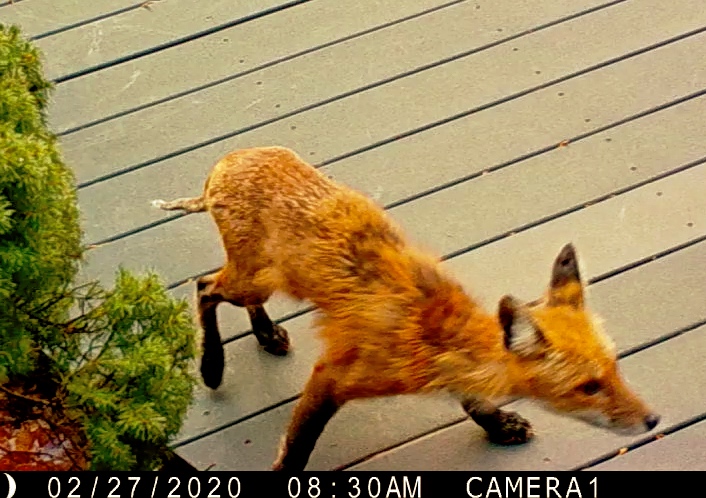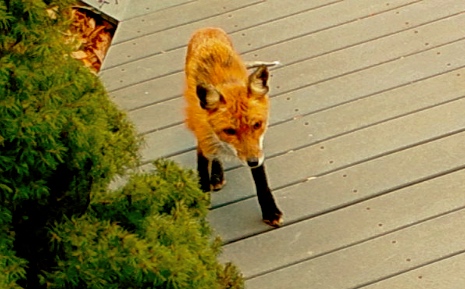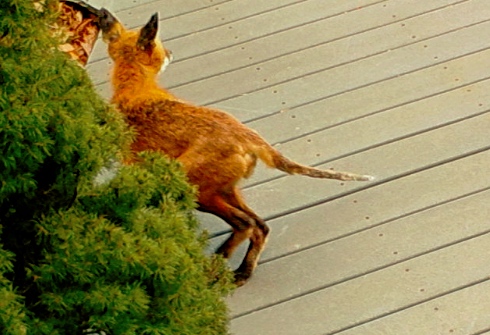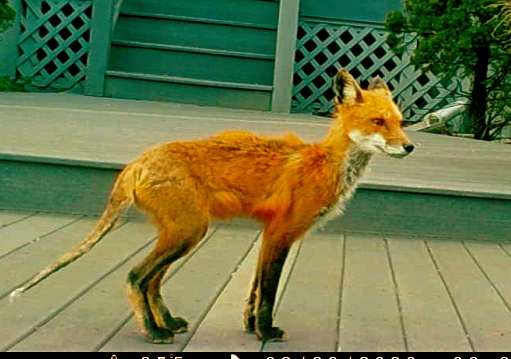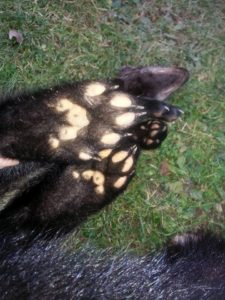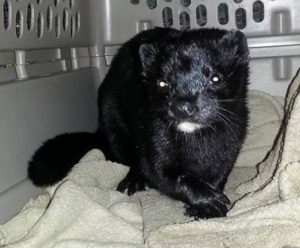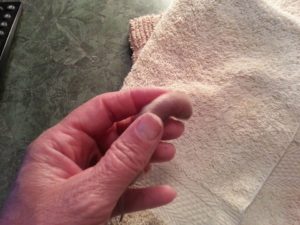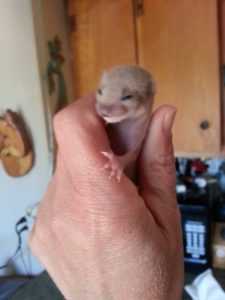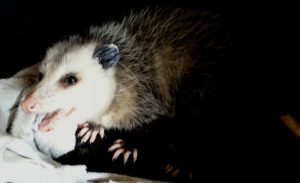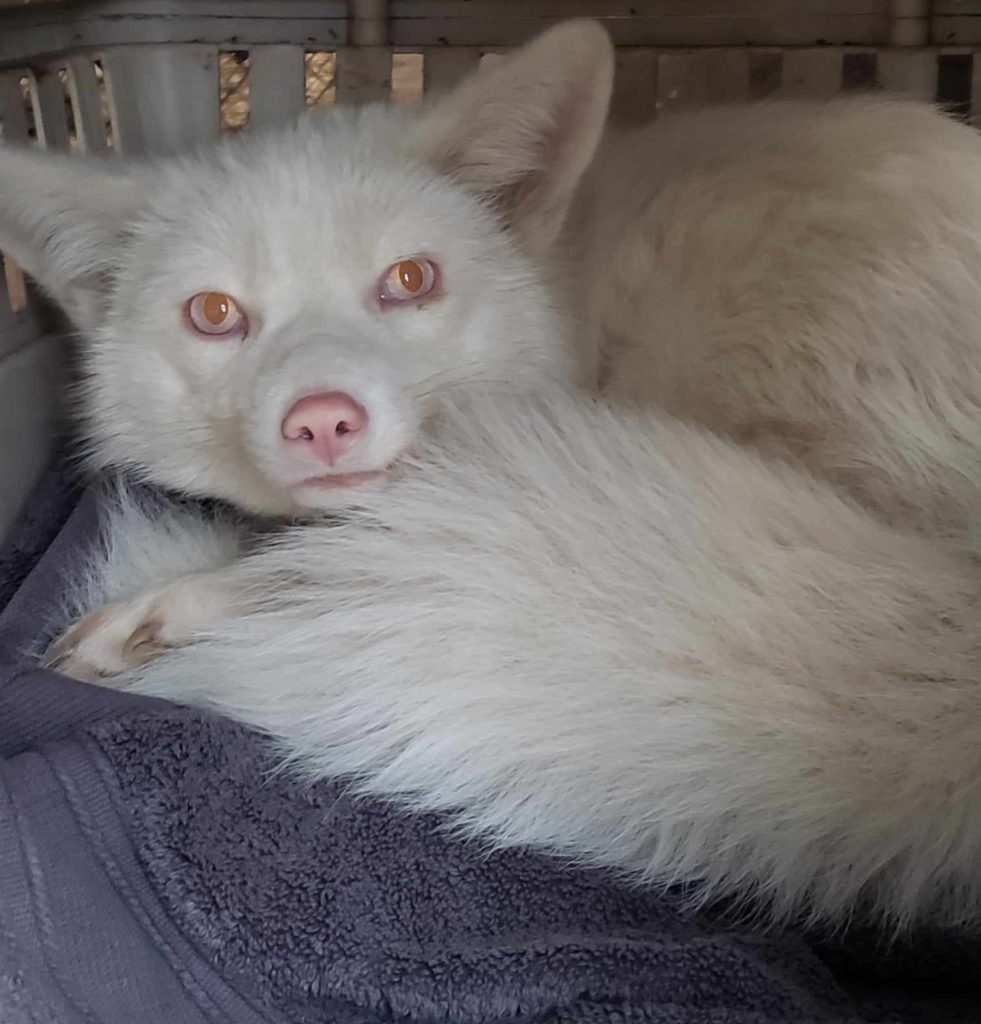
Albino Red foxes are very rarely born in the wild in New York. This young male was having a difficult time, but we didn’t know why until we were able to catch him. He was extremely thin and had pneumonia. We treated his pneumonia and put weight on him, but were concerned about releasing him until we figured out why he was in such poor condition in the first place. After observing him closely on a camera and doing some simple tests, we came to realize that he has a hearing deficit. This would explain his poor condition, as Red foxes need to hear in order to locate their prey. As a little guy, he may not have been able to hear his momma calling to let him know she brought home dinner. He couldn’t hear insects, worms, frogs and small mammals scurry across the ground. We also noticed that he is very sensitive to the sunlight and is more nocturnal than any of the Reds foxes we have ever had. Because of this, the only time we really get to see him is when we use a motion-activated camera with night vision. Though fox ranchers commonly create white foxes and variations of white through breeding programs, a naturally occuring Albino fox is very rare in the wild, so we feel very blessed to have been able to save this little guy! He is the first we have ever seen or heard of in our over 30 years of working with wild Red foxes. We are unsure at this time if or when he may be released back to the wild. Much more evaluation has to be done



